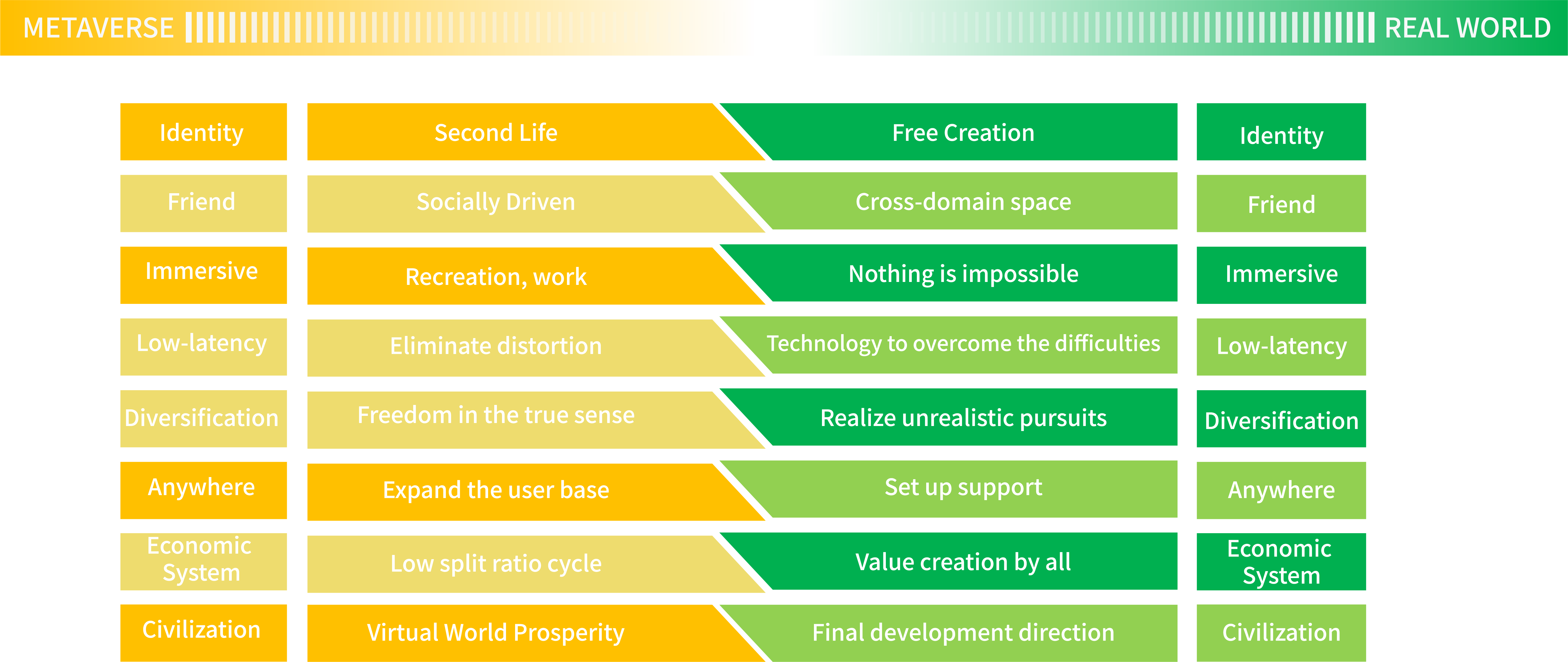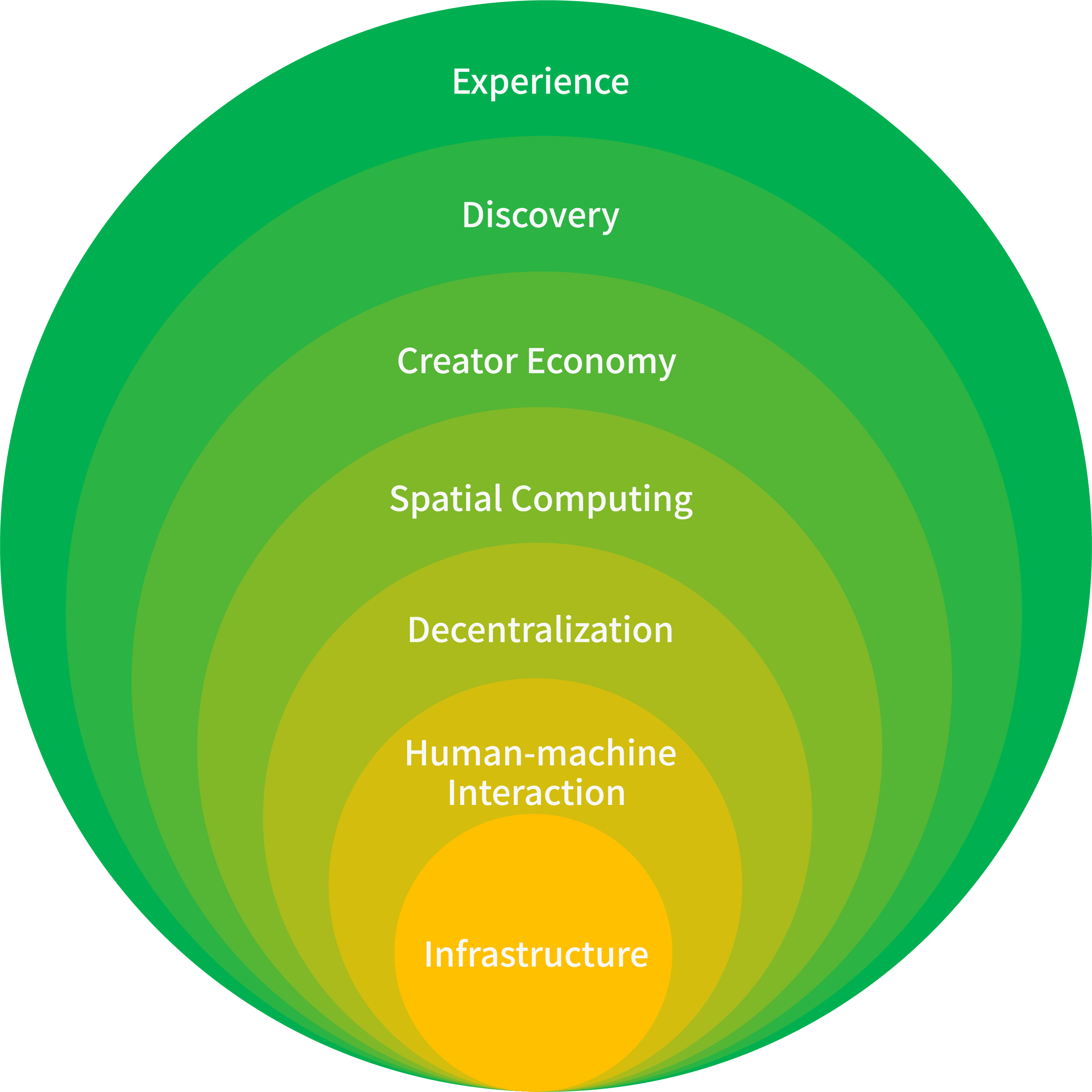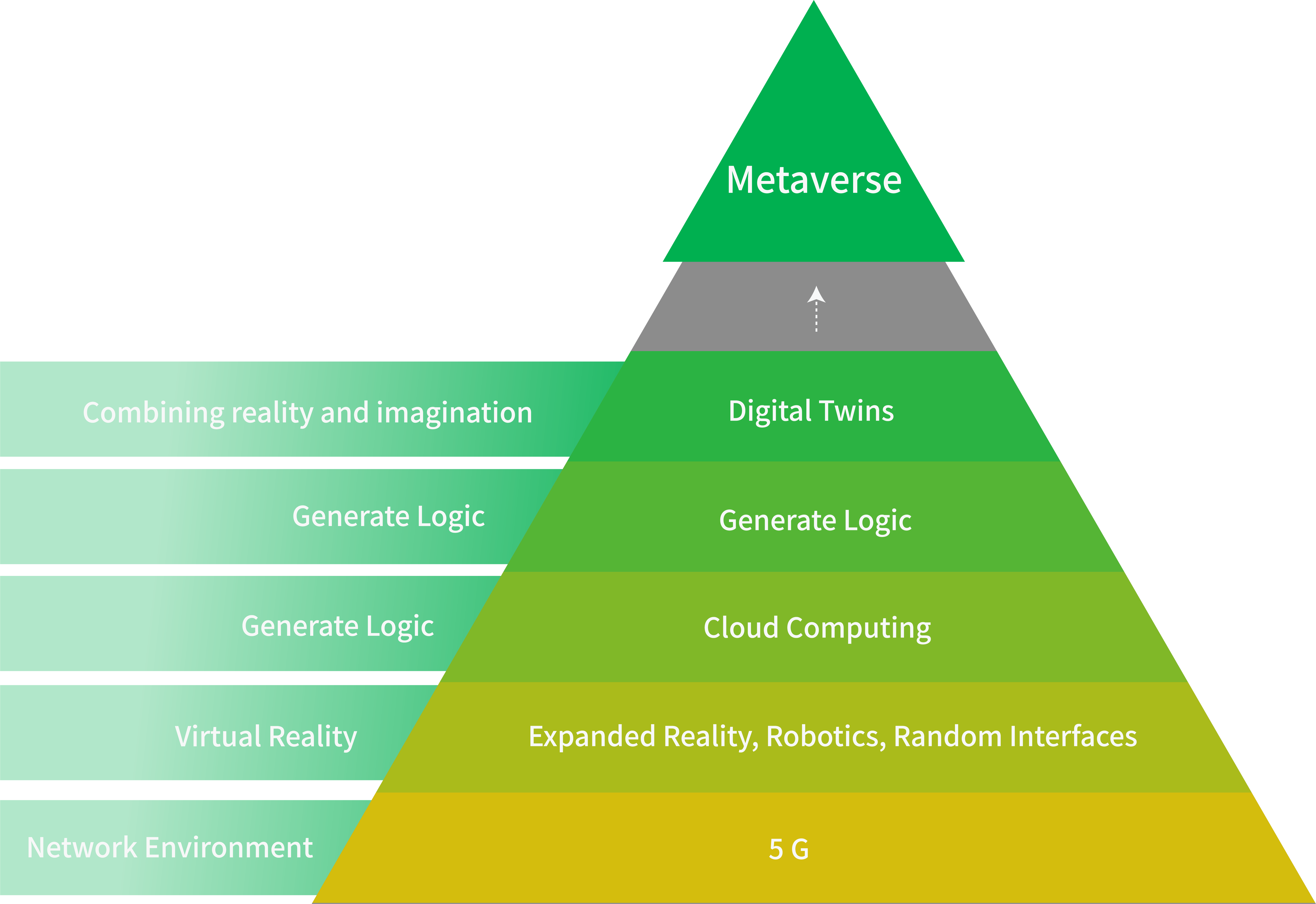The term "metaverse" has its origins in an American science fiction novel Snow Crash by Neal Stephenson in 1992 as a portmanteau of "meta" and "universe".
What is the metaverse? Simply speaking, the metaverse refers to a set of virtual spaces onto which everything and everyone in the real world is digitally projected. In this virtual world, you can do everything you can in the real
one. For instance, you’ll be able to hang out with friends and families, shop on virtual Amazon stores and keep contact with others on virtual social software. According to Wikipedia, the metaverse is a network of 3D virtual worlds
which is based on the future development of the Internet. Through virtual reality(VR) and augmented reality(AR), it will become a sharing platform where users can get access to lots of perceivable information. This is the reason why
the metaverse is named after "universe ".
The concept of metaverse was first put forth by Neal Stephenson in his 1992 science fiction novel Snow Crash, in which the metaverse is a virtual world derived from, parallel to and interacting with the real one. It is always online and almost has no difference with reality. Except dining and sleeping, people can do everything there. At present, its mainstream definition is a networked virtual reality. Within the metaverse, individual users appear as "avatars" which designed by themselves and do some daily or even extraordinary activities. They live there and control those "avatars" to move through space as in games. In this virtual world with sound infrastructure, people can realize their personal and social needs such as personal identification, currency transaction, sense of belonging and career development in an all-round way just as in the physical present world.
To understand its essence: the metaverse is not a substitute for reality, but a virtual world that coexists with the real one; it is not a "space" that has to correspond to or require analogy with the real one, but refers to a breakthrough of existing relations and a new type of dynamic influence. All exploration and experimentation related to the metaverse should not be an attempt to "recreate" a world. Besides, its value should be go further than reality. At present, it is agreed that the metaverse should be an "interactive" relationship, in which values and information can flow and exchange in real time without limits between both the virtual and real worlds. Due to its deep integration and the great development of technologies, we now are able to create more in a wider space and more boundaries will be definitely broken.
The metaverse is also hailed as "Web 3.0" or "the Post-Internet Era", which means the virtual world will become a "parallel universe". Data, digital objects, content, and IP are greatly available in the metaverse. It is not a separate world, but a world closely connected with and complementary to the present one. In the virtual world with sound infrastructure, people can realize their personal and social needs such as personal identification, currency transaction, sense of belonging and career development in an all-round way just as in the physical present world. Essentially, it points to the reshaping of social civilization in a virtual space. Therefore, although the manifestation of the metaverse is virtual, it actually covers all aspects of human life, including economy, politics, commerce, culture, technology and so on. In conclusion, the metaverse is an advanced edition of the digital society.




